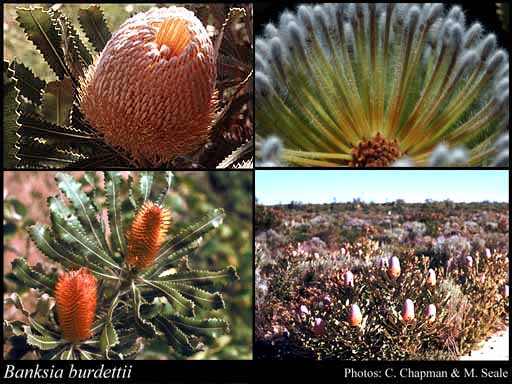- Reference
- J.Bot. 72:281 (1934)
- Conservation Code
- Not threatened
- Naturalised Status
- Native to Western Australia
- Name Status
- Current
Bushy, non-lignotuberous shrub, to 4 m high. Fl. orange-yellow, Jan to May. White or yellow sand.

Scientific Description
Shrubs, 2-4 m high; branchlets glabrous or hairy. Leaves petiolate, alternate, 70-170 mm long, 10-25 mm wide, 10-25 mm wide, hairy; petiole 16-35 mm long; lamina flat, more or less the same width throughout, once divided, pinnately divided, shallowly divided, teeth distinctly pointing towards the apex, with 22-33 lobes on each side, the margins revolute. Inflorescences tomentose (with matted or tangled, soft, woolly hairs), yellow or orange; innermost bracts 5-7 mm long, hairy. Perianth 30-34 mm long, hairy, all over, limb apex hirsute (with long, rough and coarse hairs), without awns; pistil 35-40 mm long, straight, style glabrous. Follicles hairy, hirsute (with long, rough and coarse hairs), elliptic, 20-25 mm long. Flowers in January, February, March, April or May. Occurs in the South-west (SW) Botanical Province(s), in the Geraldton Sandplains (GS), Swan Coastal Plain (SWA) or Avon Wheatbelt (AW) IBRA subregion(s).
Distribution
- IBRA Regions
- Geraldton Sandplains, Jarrah Forest, Swan Coastal Plain.
- IBRA Subregions
- Dandaragan Plateau, Lesueur Sandplain, Northern Jarrah Forest, Perth.
- Local Government Areas (LGAs)
- Carnamah, Coorow, Dandaragan, Gingin, Moora, Victoria Plains.